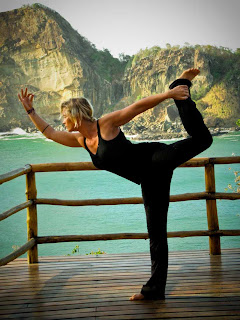To
be greeted with a smile once stepping into an unfamiliar airport, automatically
calmed all potential questions. This week was unknown to me, I knew
it could potentially answer questions I didn’t realise I had. An hour’s drive
through the picturesque landscape of Portugal allowed me to customise myself
with the surroundings; Then as the cool ocean breeze air-conditioned our
transport, I knew we were getting close.
Driving
up a dusty track through large wooden gates ... to reveal a traditional white
building, pool, tennis court and breath taking views …
Each
room is individual and personal for each guest. Beautiful Art, Balcony, Amazing
bathroom and shower. The first day we
were free to explore as we wished before our journey commenced.
Walking
down to the very Local Set-up (Tiny Village). With the Glistening Portuguese sun beaming
down on our White British skin. ‘Friendly’ might not be the word I would use to
describe the Locals, they are set in their way; But with a little effort you
could get a smile. Be friendly, and it will come; Snuck in one last cheeky
coffee… recommended!!!
Day
one: Awareness...
Meditation,
which was not new to me, but the feeling of utter freedom was. This was
possible here. As you meditate in a room with large windows which look out over
mountainous landscape, you can think of nothing else but freedom; 7:15 the sun
rises, illuminating the beauty which surrounds us all; the journeys of becoming
‘Shaini’s Yogis’ begins. Shaini had us bending in ways I didn’t know I could;
you should see my back bend go into a full wheel!
Breakfast
was worth waiting for, a vast array of nuts,
seeds, porridge, fruit, yoghurt, honey, fruit spreads and endless amounts of tea
(detox tea of course). We immediately began to feel part of a little yogi
family.
The
times between yoga and meals, allowed us to roam the land. The chance to hire
bicycles, to walk down to the beach filled with Surfers riding the waves, cliff
top walks, breath-taking views and all in a 35 minute radius, (by car it’s
5mins).
If
walking and cycling is not for you, then the ‘fresh’ swimming pool receives the
sun all throughout the day (it just forgets to heat it) allowing you to read
whilst sipping on your bottomless cup of tea, we were not ‘starved’ food and
drink was freely available throughout the day if we wanted.
It’s then ready to Meditate and more yoga.
Because of the family and homely feel, you bond so fast with your group. Each
person has their own reason for being there, and Shaini somehow achieves
individuality throughout each stage of the week.
Later sitting down to an amazing feast for dinner,
where I felt I could not fault one tiny bug. Maybe just the one or two of the unnecessary
mosquitoes.
Coming from London my day is surrounded with people;
lots of people. I was taken away to experience utter silence; need I say more…
But this silence truly does allow you to take in each
scent, each sound, each view; to be aware down to the change in sunlight, this
is all topped off with the echoing sound of bells from the local cows.
Day Three: ‘Become aware of the magical flow of life’
Practicing silence; to some it did seem to be more of a
challenge, but to have the opportunity to just to be…
Not needing to speak, to give yourself time to slow
down and actually feel no need to make polite conversation amongst our group,
this was a revelation and for me a joy. This experience would never have been
possible at the beginning of the week, in a mere three days we, as a group were
given a priceless opportunity to learn ‘the sound of silence’. This experience will take you as far as you
want to within yourself.
If, so far, it is still not enough, add the opportunity
to learn to surf, being used to the North Sea, the Atlantic was pleasant, and
more importantly perfect for all levels of surfers. This is encouraged by Shaini who is a cool
surfer herself. After a mere
two lessons, which was fitted between yoga and lunch, I achieved the challenge
of two feet on the board, standing and to a degree ‘ Riding the waves’ swiftly on to a well deserved lunch, then the afternoon spent
relaxing by the pool, which gets you ready for ‘Yoga by sun set’ .
After all these stressful
activities, my week had been finished off with well-deserved Massages. Having
studied massage, I often find myself judging practitioners, all I can say is, ‘Angela
You are amazing’, when can we kidnap you to England? Thank you.
And so the week has almost come to an end. We spend the
last morning of meditation being given the chance to take in all which has
surrounded us this week. To witness one
of the most stunning sunsets I have seen, to feel the fresh gentle breeze, and
to have answers to the weeks questions, without being given answers.
To quote Yogi Tea – ‘ The one who walks in a gentle way
comes far’.
This was my experience …
Thank you
Charlotte Mundy October 2011

